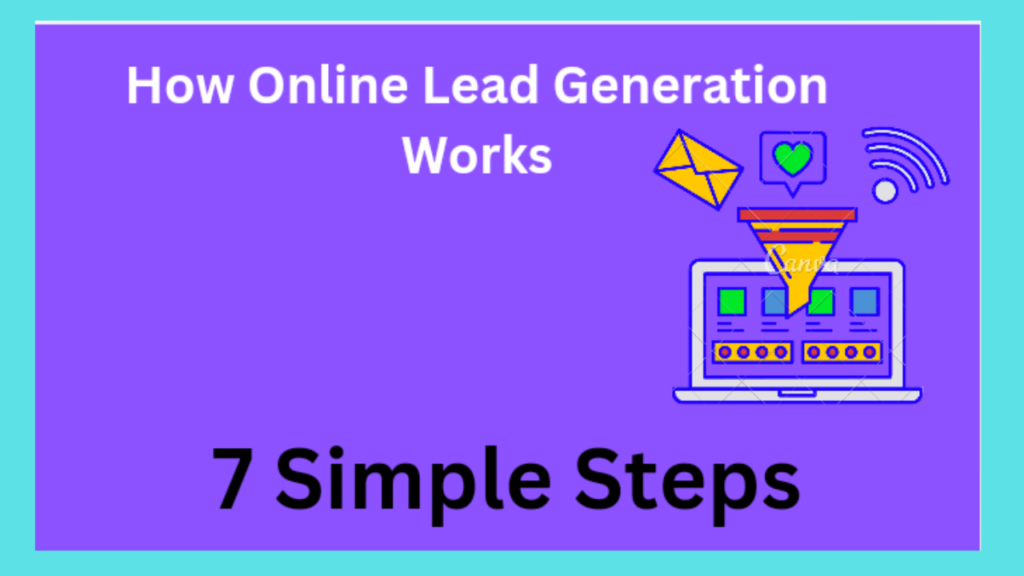
In today’s digital age, online lead generation is one of the most effective ways for businesses to attract potential customers. Whether you’re a small business or a large enterprise, understanding how to generate leads online can significantly improve your customer base, increase sales, and boost brand awareness. But how exactly does online lead generation work, and how can you set up a successful strategy? Here’s a breakdown of 7 simple steps to guide you through the process.
1. Identify Your Target Audience
The first step in any lead generation strategy is understanding who your ideal customers are. This requires building a detailed profile or “buyer persona” of the people most likely to be interested in your products or services. Consider factors such as age, location, interests, income level, and pain points. The more specific you are, the easier it will be to attract high-quality leads.
Once you know who you’re targeting, you can craft marketing messages that speak directly to their needs and desires, making your business more appealing.
2. Create Valuable Content
To generate leads, you need to provide something of value to your audience—something that compels them to share their contact information with you. This could be educational content like blog posts, eBooks, whitepapers, or videos. The key is to focus on content that solves a problem or provides valuable insights.
Content is the cornerstone of online lead generation. By offering useful information, you build trust and establish yourself as an authority in your industry. This makes prospects more willing to engage with your brand and eventually convert into leads.
3. Set Up Lead Capture Forms
A crucial part of online lead generation is gathering contact information from potential customers. To do this, you need to create lead capture forms on your website, landing pages, or other digital platforms. These forms should request basic information like name, email address, and possibly phone number—whatever data you need to follow up effectively.
Make sure your forms are simple and easy to fill out. Too many fields can scare potential leads away, so stick to the essentials. You can always ask for more details later as you nurture the lead.
4. Use Lead Magnets
A lead magnet is an incentive that you offer to prospects in exchange for their contact information. It could be a free eBook, a discount code, a webinar, or even a free trial of your product. The goal is to provide something of immediate value that encourages potential customers to submit their details.
The key to an effective lead magnet is relevance. It must be closely aligned with your target audience’s needs and interests. For example, if you’re a fitness brand, offering a free workout plan or nutrition guide would be a great lead magnet to attract health-conscious individuals.
Related post :15 Ways Lead Generation Helps Small Businesses
5. Drive Traffic to Your Website

No matter how great your content and lead capture forms are, you won’t generate leads without visitors to your site. That’s why driving traffic is crucial. There are several ways to do this, including:
- SEO (Search Engine Optimization): Optimize your website for search engines so that people searching for your products or services can find you.
- Social Media Marketing: Share your content and lead magnets on social media platforms like Facebook, Instagram, LinkedIn, or Twitter to engage your audience.
- Paid Ads (PPC): Use Google Ads, Facebook Ads, or other paid channels to direct targeted traffic to your landing pages.
- Email Marketing: Leverage your existing email list by sharing valuable content and promoting your lead magnets.
The more targeted your traffic, the better your chances of capturing high-quality leads.
6. Implement Lead Nurturing
Once you have a prospect’s contact information, the next step is nurturing them through the sales funnel. Lead nurturing involves providing personalized follow-up content to engage your leads and build relationships. This could be through email marketing campaigns, educational content, or special offers.
Your goal is to keep potential customers interested in your brand until they are ready to make a purchase. Use automated email sequences, triggered by specific actions (like downloading an eBook), to deliver timely, relevant content that moves leads closer to becoming paying customers.
7. Measure and Optimize Results
Finally, it’s important to track the performance of your lead generation efforts. Use analytics tools to monitor how many leads you’re capturing, which channels are most effective, and how those leads are progressing through your sales funnel.
Look at metrics such as:
- Conversion rates: How many visitors are filling out your forms and becoming leads?
- Cost per lead (CPL): How much are you spending to acquire each lead?
- Lead quality: Are your leads relevant, and are they likely to convert into customers?
By measuring these metrics, you can identify areas for improvement and adjust your strategy accordingly. For instance, if your conversion rate is low, you may need to refine your lead magnet or make your forms easier to complete. Continuous optimization will help you get the most out of your online lead generation efforts.
Conclusion
Online lead generation is an essential strategy for attracting new customers and growing your business. By following these 7 simple steps—identifying your target audience, creating valuable content, setting up lead capture forms, offering lead magnets, driving traffic, nurturing leads, and measuring results—you can create a robust lead generation system that consistently brings in high-quality leads. Mastering these fundamentals will put your business in a strong position to succeed in today’s competitive digital marketplace.